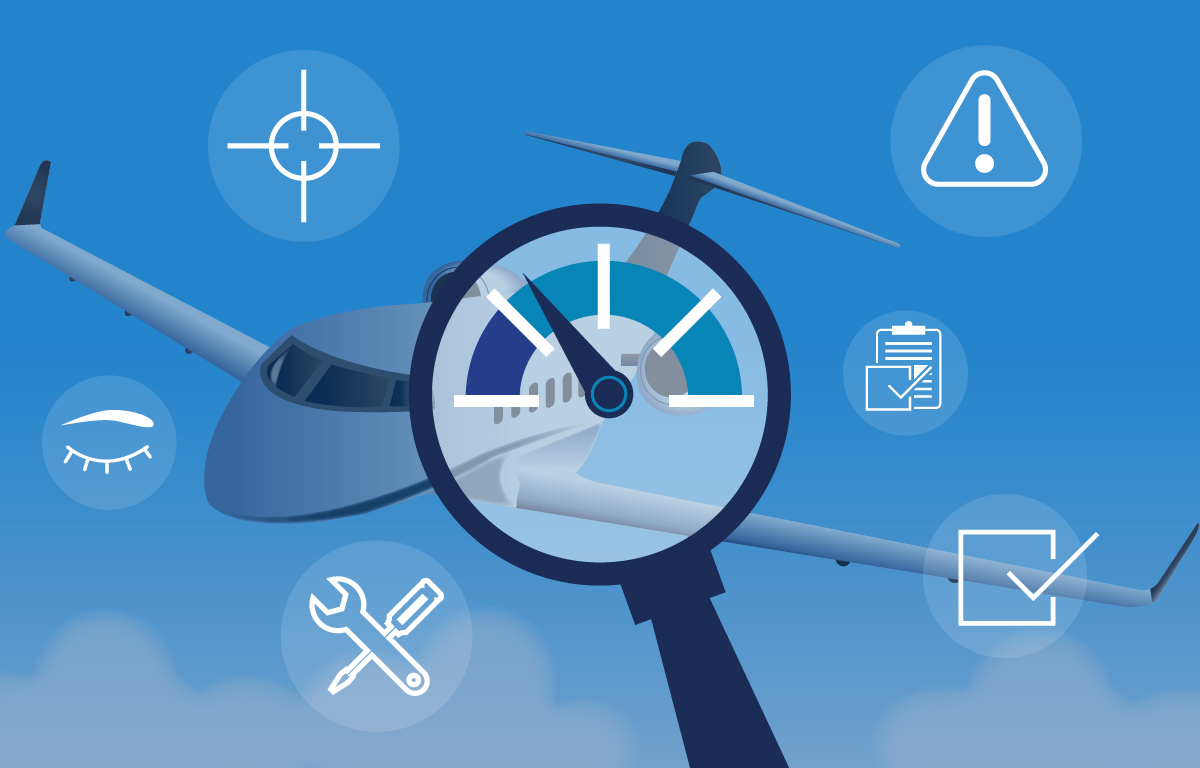What is a SAFA Inspection?
The Safety Assessment of Foreign Aircraft (SAFA) inspection is a part of the EASA Ramp Inspection Program (RIP) and aims to improve operator safety and compliance by allowing for random ramp inspections. It is important to note that these checks can be done in any country that participates in the RIP, which includes non-EU/EASA nations such as Canada, Brazil, United Arab Emirates, and Singapore.
Any non-EU operator is open to being SAFA checked. The inspections are primarily selected randomly by a computer.
What to Expect During a SAFA Inspection
- The SAFA program selects an operator for an inspection and notifies the airport authorities and the assigned inspector.
- Generally, at parking, the inspector will identify themselves to the pilot in command or most senior representative of the operator available informing the crew of the inspection.
- The inspector follows the standard SAFA checklist, in full, or in part, to review the safety and compliance of the operator.
- If deficiencies are discovered, they will be included in an inspector report which lists the finding and its associated classification. Classifications rate the severity of the finding as per the following categories:
- General remark: Any observation from the inspector not classified as safety relevant. These remarks are provided for crew information and awareness.
- CAT 1 — Minor: Any detected non-compliance with the applicable requirements or the terms of a certificate that has a minor impact on safety.
- CAT 2 — Significant: Any detected non-compliance with the applicable requirements or the terms of a certificate that has a significant influence on safety. The PIC and regulatory body are notified.
- CAT 3 — Major: Any detected significant non-compliance with the applicable requirements or the terms of a certificate that has major influence on safety. The PIC and their regulatory body are notified and immediate action is required or it could result in grounding of the aircraft.
- If corrective actions require an in-person follow-up, the additional inspections can usually be coordinated with the operator’s local authorities (such as the local FSDO for U.S. operators).
Corrective actions must be completed to avoid penalties such as fines or even prohibition from flying into certain areas.
What Inspectors Look for
SAFA inspections vary based on the inspector, the operator, and the aircraft. Inspectors have the discretion to select which parts of the checklist they wish to review. Primary focus often surrounds crew documentation, crew licenses, manuals, MEL and MEL deferrals, aircraft condition, and safety equipment. Inspectors may also focus on flight planning to ensure the plan is fully ICAO compliant and meets applicable requirements for fuel and equipment.
How To Prepare for a SAFA Inspection
You cannot predict a SAFA check in advance, so it is best to be prepared ahead of time to ensure a smooth inspection. You can improve your SAFA inspection experience using the following tips:
- Be familiar with all your procedures and make sure you are adhering to them (including your IOPM, MEL, and/or FOM)
- Make sure all your crew records are current and complete
- Maintain current copies of all pertinent aircraft documents and be ready to show them, if requested (i.e. registration, airworthiness, insurance, AFM, checklists, etc.)
- Have a SAFA manual that outlines how your operation specifically aligns to each SAFA checklist item so you and the inspector can use it as a reference.
Have questions about SAFA or want assistance with the development of a SAFA manual? Contact us today to see how we can help you be prepared for your SAFA inspection.



